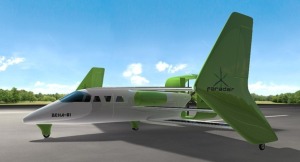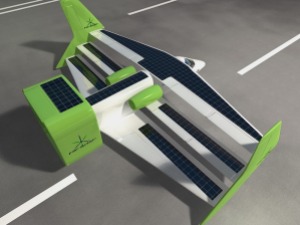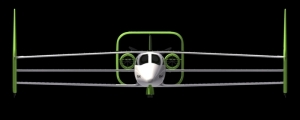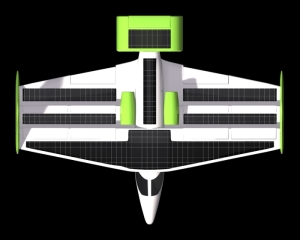Meet Beha, The World’s First true Hybrid Aircraft

A new crowdfunding project is giving aviation and technology fans the chance to contribute to the development of the world’s first true Hybrid Aircraft. Named Beha the aircraft has an innovative triple box wing design and is powered by a combination of electric motors and a bio-diesel engine. The ground breaking eco-friendly aircraft is the brainchild of a new English – US Venture called Faradair Aerospace Limited and is currently on KickStarter to raise funds for building a prototype
The prototype Beha Aircraft will be a six seater that uses a unique triple box wing design to produce an eco friendly aircraft that makes the most of cutting edge energy recovery technology and materials available. Featuring two electric fan motors that will deliver 200hp each, alongside a 200hp bio-diesel generator with a pusher propeller designed to be extremely quiet.
How Faradair is Making Hybrid Aircraft a Reality
Faradair claim that the plane will take off and land under electric power while the bio-diesel engine will kick in during flight to recharge the aircraft’s batteries and increase the potential distances covered. Naturally, the aircraft will also use solar panels and wind turbine technology for energy recovery while the Triple Box-Wing design is designed to create a massive amount of lift and a reduction in wing turbulence.
Backers of the project on KickStarter who pledge over £60 will receive a voucher for a flight experience in Beha with a friend one the aircraft has been built and approved to fly.The first stage of Beha’s development will involve aero engineers from the UK working on finalising the aircraft’s design, as well as a prototype and assembly facility to be built by 2016. With the potential to be a game changer Beha will also initially be produced in the UK with production eventually moving to a US facility in the future.
The prototype aircraft will be fully UAV capable as well as big on safety; features will include fail-safe parachute systems and crash protection structures widely used in top level motor racing such as Formula 1.
Over the next year Faradair plans to concentrate on further research and development of the aircraft with the aim of achieving specifications and the making of prototype parts that will be ready to use in building the aircraft. There are many incentives such as a flight in the aircraft or opportunities to attend exclusive events that will tempt aviation, technology, and eco-friendly transport enthusiasts to back the project but only time will tell whether the innovative aircraft ever takes off. We surely hope so.







